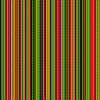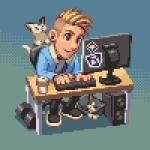Search the Community
Showing results for tags 'tools'.
-
Here's a list of the tools I use daily for game creation, coding, animation, etc. I hope you'll find some useful info, let's begin. Art and Animation ########################################################################## Photoshop: The daddy and mommy of raster editing. I've tried lots of alternatives over the years but I always came back to it. Even though it's not a specialized tool (creating pixel art for example) I've found that it's quite flexible and it allows you to work on a variety of project types. I USE IT FOR: Text manipulation, logos, etc. GUI creation - shape tools and the alignment tools come quite in handy. Add effects (strokes, shadows, etc) and you're golden. Overall finishing touches. Playing with curves,intensity, blending modes to give my graphics that extra visual boom. ALTERNATIVES: GIMP: Also called the poor's man Photoshop. It's a pretty decent and powerful program and it has many of the features offer by it's more expensive brother Photoshop. I gave it multiple spins over the time and I was disappointed in the GUI arrangement and the overall workflow. Asesprite, Pyxel Edit, Graphics Gale: These are 3 different pixel art creation software packages. I don't do pixel art and I only tried them for a short amount of time but I hear good things about them. ########################################################################## Illustrator: One of the most famous vector editing programs out there and rightly so. First of all it's an Adobe product so you have good integration with other Adobe products (such as Photoshop) and a certain level of quality. Although it's a bit tricky to get into it at first it's really worth it - there's nothing more powerful out there in terms of vector editing (as far as I know) and you can really create some awesome art for your games. ALTERNATIVES: Corel Draw: Altough I am a big fan of PainterX (digital painting at it's best from Corel) I'm not so taken aback with Corel Draw. Obviously you can create artwork in it but I had the sensation that it is more geared towards desktop publishing. It's a good product all in all but you should rather take the time to learn Illustrator - it will be worth your time. Inkscape: This is a free vector editing software and you would probably expect it to be bad in some way. It's really not. Very easy to learn and with an intuitive workflow it allows you to create art simple and fast. True, it lacks the sophistication of Illustrator but it's the perfect choice for a beginner artist - the guy behind game art for programmers uses it extensively so he must know something. ########################################################################## Moho: IMHO the best 2d skeletal animation software out there. The only decent competitor out there is Toon Boom but it lacks in the bone setup area and it's mainly focused on frame by frame animation. Spine it's simple and intuitive but it lacks the power required for more complex setups ( it also lacks vector drawing). It's only drawback is that it can't import properly .psd's and .ai's but it compensates by having it's own (very powerful and sometimes more intuitive than Illustrator) vector drawing tools. Oh, and I mentioned that it also has particles? Motion Blur? Z Depth layer ordering and animation? IK animation? Animation Morphs (like the ones you can find in Maya)?Smart Bones? Animated strokes? 3d capabilites? You get it, I'm hooked. I USE IT FOR: Character and prop creation 2d Animation ALTERNATIVES: Spine: A lightweight 2d skeletal animation program. Intuitive and friendly especially for artists that are new to animation. ToonBoom: This is Moho's main competitor as it has similar complex animation tools. It has a steep learning curve and it offers lots of features in terms of animation. I think it is more geared toward animation movies rather than games but you can definitely create great art and animation in it if you invest in learning it. Adobe Animate:Adobe's 2d animation flagship product. Since it's Adobe you know you'll get tight integration with other products from the Adobe Suit (Photoshop, Illustrator) and a certain standard of quality. One thing I liked about it was the particle creation capability and the large variety of brushes. Although it's a bit weak in the area of rigging and bones (specially compared to Toon Boom or Moho) it is a powerful and complete piece of software so it might be worth your time. ########################################################################## Cinema4D: Altough I've been infatuated with Maya I've come to love this friendly 3d editing software. Why? Because it just works. It works fast, it works good and it's easy to learn even for 3d noobs. I USE IT FOR: 3d Text creation Various object renders ########################################################################## Lightroom:The best photography catalogue out there. I had 50 thousand photos once (paintings pics mostly) and other similar programs died just trying to read them. Not Lightroom. How can a dev might use it? For me it's useful when I gather lots of art inspiration from various websites, games, etc and I can browse and rate them with ease and pleasure. I USE IT FOR: Inspiration Management ########################################################################## SqCheck:A nifty little utility that allows you to preview rendered frames (sequenced) of animation at various speeds. It might not seem as much but it's much easier to focus on the animation final result without all the clutter of a big animation program. I can spot common mistakes quite easily - like having too much static extra frames at the end of an animation (like having a walk cycle and the foot stays just a bit too much at the end of animation). Or I can load it each third or second frame sequence to see how it looks without all that interpolation in between (because smaller spritesheets and snappier animation - Richard Williams said in it's incredibly inspiring animation book - The Animator's survival kit. I USE IT FOR: Animation final touches ########################################################################## Timeline Fx: A particle editor for all your particly needs. Explosions, flames, bubbles, etc. It has the best blend of usability and ease of use. Another particle editor beast that I like it's Particle Illusion - altough you can create the same particle effects with the standard particle properties (particle life, velocity, lifeOverSpeed, etc) it really shines at particle assembly - you can combine multiple particle effects, animate them, create deflectors/blockers/wind, clip them to alpha masks, etc. I USE IT FOR: 2d Particle creation and FUN ########################################################################## Irfan View: An image viewer that can cook, clean and take out your garbage. Well, maybe not but it does have a motherload of options and it supports a large variety of image formats (.psd, .tiff). It even reads .txt for god's sake. My favourite shortcut in Irfan View is Shift + 1. It opens your image in a predefined application - you guessed it, Photoshop. And it's very fast. I USE IT FOR: Image viewing and fast access to Photoshop. ########################################################################## Programming ########################################################################## Sublime Text: "The text editor you'll fall in love with" - says in the website title. Well I did...over the heels. Coming from a C# background I was used to Visual Studio - awesome IDE, ideal for large projects and with lots of little helpful features. Sadly using JS in Visual Studio it's a drag. Intellisense it's basically useless, go to code definition doesn't work well most of the time, starting it takes quite some time. Sublime Text to the rescue. Lightweight, uber customizable, lightning fast, works like a charm with JS. I recommend installing JS Hint for linting and Js prettify to make your code readable. Also learn some general shortcuts for a better workflow. And if you really wanna fly in it learn either Emacs or Vim shortcuts (it has plugins for both). I used Emacs first - a bit too heavy and a carpal tunnel risk. Switched to Vim and after the rather abrupt learning curve I feel much more comfortable. And if you really wanna protect your hands and increase your touch typing speed I'd reccomend switching from Qwerty keyboard layout to Dvorak. ########################################################################## Phaser: Html5 game framework. Why? You probably know why since you're on this forum so you're probably a dev yourself. Easy to learn, quite powerful, good performance. ########################################################################## Other ########################################################################## Sprite Sheet Exporter Photoshop Script: Altough you can create spritesheets directly from many 2d Animation programs I find it it allows for much flexibility to import sequenced frames in Photoshop (using File > Scripts > Load Files into Stack) and doing various refinements -I usually get rid of all transparent pixels with Image > Trim and apply various color corrections - this will be my master animation document. After that I can resize it to fit my needs (can happen multiple times during the life of a project) and export it to a sprite sheet with the Exporter script. ########################################################################## Audacity: Simple yet powerful sound editing software. While I can't create music/sfx by myself I can greatly improve it by mixing it, fading in/out, applying various effects. ########################################################################## AutoHotkey: A nifty little utility for Windows that allows you to remap various shortcuts, exe paths and other commands to custom keyboard bindings. It increases the workflow speed enormously and it makes a working day more pleasant. Imagine double clicking on Photoshop.exe 30 times a day. It might not seem much but if you're in another application you'll have to minimize it and hunt the icon on desktop - it interrupts the creative process and takes a bit of time. It's much easier just to press a combo keyboard shortcut (mine it's Ctrl + R) and there pops Photoshop. Or my current working folder. Or sublime Text. Try it - you'll love it. ########################################################################## Wamp: Web Development Environment. You'll need it to develop Html5 games and it's very easy to install and use. ########################################################################## Sumatra Pdf: For all your pdf reading needs - programming, animation and design books. First it was Acrobat reader and it was good but then it got bloated and sluggish. Then it was Foxit and it was so much faster than Acrobat Reader but then it got bloated and sluggish. Now it's Sumatra and altough it's simple it's very fast and it supports .mobi and .pdf. Let's hope it stays clean. ########################################################################## Various Online Tools ########################################################################## Tiny Png: Incredible png compression with very little quality loss (if any). I even saw 90-95 percent file reduction on my png's - that's going from 1 MegaByte to 50 KiloBytes - pretty impressive) ########################################################################## Trello: Task management and collaboration. I heard good things about it but I think it's better suited for larger projects and I still prefer to keep track using pen and paper. ############################## @Goblet Ed################################## draw.io: "draw.io is completely free online diagram editor built around Google Drive that enables you to create flowcharts, entity relation, mockups and more. Your data is stored only in Google Drive, so no additional third-party to trust with your data (or extra accounts)." It has good object snapping which makes placing and aligning things very pleasant. ########################################################################## I USE IT FOR: Creating screen flowcharts One page designs Level designs (can import your sprites) ############################## @Goblet Ed################################## Coggle.it: Pretty mind-mapping tool. I USE IT FOR: Creating pretty mind maps to organize new information ########################################################################## *************************************************************************************************************************************** Feel free to contribute in comments (link and your personal experience) and I'll try to keep this updated - just tools and utilities please, there are lots of resources lists already. ***************************************************************************************************************************************
-
Hi, everyone! I am Daniel (programad) Gomes, a 37 years old Microsoft Certified Technology Specialist and I want to talk to you about a project of mine. I hope this post do not go against any html5gamedevs rules, if so, please moderators, feel free to delete or move this post. I will never mean to disrespect fellow gamedevs or this community. More than a year ago, I noticed on Facebook gamedev groups a lot of people being bad to newcomers to the wonderful game development world and that really bothered me. Some thougths couldn't get out of my mind: "Why people act like that? Do we really need that behaviour? Are we teaching the newcomers or just putting them down, pushing them away from gamedev, disencouraging them? Is the Facebook social network a good place to discuss gamedev?" After some analysis, I came to some conclusions: Yes, Facebook is really good to newcommers. It is friendly with a really solid workflow on groups mechanism; There are too many user groups on Facebook! I documented at least 20 with more than 5k users; Even those who know about reddit and other communities, just prefer the simplicity of the social network format; There are already really great communities dedicated to gamedev: reddit/gamedev GameJolt; Itch.io; IndieDB; Gamedev.net; Gamasutra; Unity Connect; IndieGo; DevelTeam; iDev Games; This one, html5gamedevs; Existing gamedev communities are great but offer a little too much complication, they are formatted by the creator's wishes, not by the community itself; Existing gamedev communities, don't offer link to other communities; The most famous gamedev communities (GameJolt, Itch.io) are focused on the games, not on the developers themselves; So I decided to start the IndieVisible project. A place where I aim to fix all the above issues, creating a safe place to help people to develop their games. The main characteristics of the project are: Open Source - Anyone can contribute with the code that runs the community. [here is the github repo] (https://github.com/anteatergames/indievisible) and the azure devops project; Social Network format - The main workflow is inspired by the biggest social networks like Facebook, Instagram and Twitter, wich is friendly to newcommers; Exclusive tools - The code is directed to gamedevs, it is not generic (of course you can fork the project and make a generic social network if you want). The features planned will help more people to develop their games like project management, writer tool, brainstorm, team management, etc; A central hub - It is the ONLY gamedev community that has links to other gamedev communities, acting like a central hub wich you can use to register all your presence on the web as gamedev; Community oriented - There are a mechanism to suggest and vote on ideas for the community, no other community have easy mechanisms to gather feedback and focus the development effort; The main features of the platform are: Social Network - Inspired by the most successfull social networks on the market. It have like, comment, share, etc; Team Management - Members can create teams and invite other members to the team. This month, I will implement the creation of "recruiting teams" to help people that are alone but want some help on their projects. Teams will be able to earn medals and trophies for acomplishments like game jam participation; Brainstorm System - Everyone knows that "idea guy", right? So I am giving voice to those guys; Featured Articles - The main page have a featured caroussel wich shows content featured by the staff based on voting system, in the future, the community will be able to vote to feature articles; Multi-language - All the system is localizable and there is a open translation project on POEditor. Anyone can contribute; Game Jam - There will be a game jam system where you can create game jams or link to other communities' game jams, becoming a central hub even for that purpose; Events/Meetups - Users will be able to add events to the community calendar, helping people to atted to physical meetings where they can expand their network, trade some services and put some faces on the names; Jobs - A place where users can post paid jobs and apply to postions offered; Challenges - Users will be able to post paid/unpaid challenges (art, sound, code, prototype, etc), rate the submissions and maybe, in a future, pay the winner to keep the submitted art. Gamification - Badges, points, achievements and ranks. You can earn stuff and climb the ranks; App Graphics Generator - A mix of Norio's tool and some app icon generator tools like this; Witter tool - A tool to help video game writers keep their story consistent and canon ; Translation tool - Anyone will be able to add some strings, be helped by the community on translations and download the translated final result; Project Management - Inspired by the awesome Hack N Plan and integrated with other system features; Component Scripts - Anyone will be able to share, search and download component scripts; Technical characteristics: CI/CD - The publish pipeline is automated by Azure DevOps so each commit is published almost instantly to the stagint environment and to publish on production, we just need to approve the already tested commit; Cloud-based - The whole system is hosted by windows azure with benefits that only a cloud can offer like geographic distribution, worldwide datacenters, CDN, etc.; Responsive Layout - The website can be used on any screen, any device; Progressive Web App - The layout is responsive and the application is PWA, wich means you can install on your phone and use it just like a native app. There is even a staging environment that people can test new features! The project completed a year on 27th August and I am working a few hours a day, after my daily job. I won't stop to work on this as it is a work of love, I want to contribute on optimizing interaction between gamedevs, connecting newbies with industry pros, improving the gamedev scenario to build better games in less time. I really hope you guys join me on this initiative to improve the gamedev scenario. I will not be naive and think I can migrate everyone to IndieVisible, that is not my goal, my goal is to improve the overall scenario, bring people from different communities together and offer a good service to all of them, specially newcomers. I would really appreciate if you guys visit the IndieVisible and give me some feedback on any subject you find necessary to comment. I have nothing more to add. Best regards, Daniel Gomes
-
I created a tool alongside Gammafp which could be useful for Phaser 3 users. Gammafp thought of how useful a free Atlas Packer would be for Phaser users. The tool can create atlas.json files from imported spritesheets and sprites. It was very recently developed so you could expect to run into some issues, please let us know! How to use: - You can import sprites or spritesheets depending of your resources. - You can add more sprites or spritesheets too if you missed any file or wish to combine animations. - Once the pictures are correctly displayed, you can click the save button. - This will download a .zip file containing both the sprite files and .JSON file set up. - Done! LINK FOR THE ONLINE TOOL Important: There's an animator section but it's far from complete, this section will be further developed depending on the reception and feedback of this tool! Gammafp programmed the tool and I made the art for most icons!
-
So, what do you like to write your code in? I have been using Gedit on Linux till now, so I wish to get myself a new text editor, and maybe discover some interesting things.
- 41 replies
-
- test editor
- tools
-
(and 1 more)
Tagged with:
-
Today I started playing with Aseprite and they have a new command tool to export your spreadsheet to a PNG/Json wich is compatible with Phaser/Pixi so I made this Also I used Grunt to make my deploy system easier, I followed this tutorial wich explains very easy how to use Grunt. And I start wondering if there are other tools that may be usefull to develop with Phaser. So wich tools do you guys use for your Phaser games ? Other one i have used Leshy SpriteSheet Tool
-
Joeb Rogers | AAA Gameplay/Tools Programmer I've experience in Unity, Unreal and GameMaker, as well as frameworks such as Monogame and SDL2. I'm very comfortable programming in both C++ and C#, and am also pretty comfortable in JavaScript and Lua. I'm experienced with both 2D and 3D games, so can comfortably fill a position on any team. My rates are negotiable, as are the number of hours a week I can put in, whether you're just looking for some short term contract work, or a longer term commitment. Here's a link to my not-so-up to date portfolio, that at the least showcases some of what I can do and my role in the industry. https://joebrogers.github.io/ My role in the industry has had me working most recently on GTA V Online at Rockstar North, however I cannot go into more details on that. My email is listed at the bottom of the site, so don't hesitate to get in touch if you have a project in mind. Thanks! NOTE: My current earliest availabilities for more contract work is the 18th of December, so if you're looking to get something scheduled in and finished before christmas, or in preparation for beginning a project in the new year, please get in touch!
- 1 reply
-
- programming
- gamedev
-
(and 3 more)
Tagged with:
-
Hello everyone, Recently i finished my first medium-sized HTML5 game - Medieval Defense Z. I came from flash background and developing for HTML5 presented with some new challenges. So i would like to share what worked and what didn't. This is more like review/tutorial type of thing, so hopefully someone will find something useful. • Goals: • 60fps. • Smooth gameplay and animations. • Quality comparable to flash games. • Tools: • Language: Haxe. Strictly typed programming language, similar to ActionScript 3.0. Compiles to all major languages, including javascript. • Editing: HaxeDevelop IDE. Freeware, great code completion and very fast compared to everything i tried. • Debugging: Chrome. Has console, debugger and profiler. • Rendering library: Pixi.js. Uses display list concept like flash. Works well. • Sound library: Howler. Good enough, the id system is a bit weird though. • Bitmap font exporter: http://kvazars.com/littera/. Free and web-based. • Sprite Sheet Packer: https://spritesheetpacker.codeplex.com/. Freeware and very simple. • Graphics: • Scaling will look ugly if you use many small png files for textures. • If you want nice scaling, fast load times and fast rendering - pack everything to 2048x2048 spritesheets (include bitmap fonts too). • Resolution of assets: 1024x768, background can extend to 1382x768, so it covers most aspect ratios in horizontal orientation. • To get proper native resolution in mobile browsers i scaled up renderer and scaled down canvas by window.devicePixelRatio. • Sounds: • Library: Howler. • Sound formats: ogg for Chrome and Firefox, m4a for Safari and Internet Explorer (note: mp3 has licensing issues with play count). • ffmpeg: because of licensing issues and whatnot can't convert to m4a, unless you recompile ffmpeg with m4a, which is a pain to setup. • I used MediaHuman Audio Converter (freeware) to convert from wav to ogg and m4a (64 bit). • iOS Safari: keep in mind that before any sound could be played, user must first tap on the screen. • Mouse Events: • Used pixi.js API to open links. • iOS Safari: window.open under "touchstart" event won't open links in new tabs, use "tap" event instead. • sprite.on("mousedown", callback) for desktop. • sprite.on("tap", callback) for mobile. • Performance: • Reuse frequently used sprites. • Avoid creating too many objects every frame. • I would recommend looking up data-oriented programming to get more juice out of Javascript. • Record timeline with Chrome profiler to find performance bottlenecks. • Masks are slow. Use trim if you only need a simple cut. • Very large functions may cause lag spikes. My best guess is that browser is trying to optimize the function. Splitting big function into several smaller ones solved my problem. • Game Debugging: • Simple CSS + DOM side menu. • Basic field view/edit. • Simple buttons with callbacks. • How to debug html5 game on android (mobile) with desktop chrome (PC): 1. Upload game to your website. 2. Go to (desktop) chrome: chrome://inspect 3. Connect Android device with USB and run your game on android chrome (your android device must be enabled for development). 4. Open Command Prompt and enter: adb devices (must have Android Debug Bridge installed). 5. To quit debugging enter: adb kill-server • Conclusions: • Programming in Haxe instead of pure Javascript probably saved hours and hours of debugging. • Would have liked more automated solution for spritesheet and sound stuff. • Poor performance bites sooner or later, so be prepared to do extensive profiling. • Stable 60fps is very hard to achieve, even if you keep your code below 1-2ms per frame. • Overall i am happy with the results, however it took longer than expected to make this game. Any feedback is appreciated. Game Link: http://html5games.vooxe.com/a90bd3f1fba643828ccfb0109b41a252/index.html Trailer:
-
Howdy Everyone! We are looking at creating a game in phaser for the first time and were leaning towards creating something in vein of "Limbo" (yes, I know that game was all 3D made to look 2D). What are good tools for exporting bone based animations to phaser for development/programming? We would be using bones on flat geo with sprites. We are BabylonJS veterans and we've used a combo of Maya and Unity3D to export animations to that platform, but Phaser I'm not sure what programs export to a Phaser friendly format. Trying to figure out the workflow for our artists. Thanks for any input! -Chad
-
I have been looking over the forum and such and through various resources and decided to throw together some things for new comers and such. If you want to add to the list, just reply and I will get around to it. I will be adding more as I come across them as well. Legend [$] Must Purchase [/$] Purchase but has Trial Version [//$] Must Purchase if for commercial Assets SoundImage Books, Tutorials and Videos [$] Create a procedrual endless runner [$] Create a vertical endless runner [$] Discover Phaser [$] From null to full HTML5 [$] Interphase [$] Mobile Development [$] Scale Manager Guide [$] Tween Manager Guide Full Source Games Phaser Games Pack #1 Plugins Arcade Slopes by hexus [$] Box2D Premium by Photonstorm Grid Physics by crffty Island JS by luckylooke Isometric Plugin by lewster32 [$] Particle Storm by Photonstorm Phaser Animator by Kody Bentley Phaser Bones by silashatfield Phaser Inspector by netcell [//$]Registry Plugin by Phreaknation [$] Virtual Joystick by Photonstorm [$] Waveforms Path Editor by Photonstorm Tools Leshy SpriteSheet Tool by Leshy Labs [$] Phaser Editor [/$] Texture Packer
-
I used the tool :https://github.com/BabylonJS/Babylon.js/tree/master/Tools/MakeIncremental. For the cut up of the babylon file has 226mb, the working environment win7 64; memory size: 16g; visual studio 2013; I monitor the changes in memory, when the program takes up nearly 2g when stopped. I have added app.config: <runtime> <GcAllowVeryLargeObjects enabled = "true" /> </ Runtime>; But still not, how do I do. Thank you! The following is an error message: Snap to System.OutOfMemoryException HResult = -2147024882 Message = throws an exception of type "System.OutOfMemoryException". Source = mscorlib StackTrace: In System.String.CtorCharArrayStartLength (Char [] value, Int32 startIndex, Int32 length) In Newtonsoft.Json.Utilities.StringReference.ToString () In Newtonsoft.Json.JsonTextReader.ParseNumber () In Newtonsoft.Json.JsonTextReader.ParseValue () In Newtonsoft.Json.JsonTextReader.ReadInternal () In Newtonsoft.Json.JsonTextReader.Read () In Newtonsoft.Json.Linq.JContainer.ReadContentFrom (JsonReader r) In Newtonsoft.Json.Linq.JContainer.ReadTokenFrom (JsonReader reader) In Newtonsoft.Json.Linq.JObject.Load (JsonReader reader) In the MakeIncremental.Program.ProcessSourceFile (String input) location c: \ www \ babylonjsExploer \ Babylon.js-master \ Tools \ MakeIncremental \ Program.cs: Line number 236 InnerException: what should i do?,thank you!
- 2 replies
-
- tools
- makeincremental
-
(and 1 more)
Tagged with:
-
Hi guys, Im using Buildbox and Construct 2 to build my games... i found some constraints in Builbox because it does not allow me to do certain games like puzzle ones... Construct 2 lincese is much cheaper...(i dont have to pay 99 dollars a month). So it is worth using it? Can i do eggerland mistery game using construct 2? Or do you think there is other tools available for handling more complex games (2d games - i also have unity 3d installed). What do you think about it?
-
Hi my HTML5 Gamedev fellows. A few months ago I started using a very interesting workflow / toolset in developing my games. Basically I use a Photoshop Generator to automatically do magic things Automatically generates spritesheets of all sprites included in the PSD Document Automatically generate bitmap fonts of the fonts I use in the PSD Document Automatically generates a JSON-File with infos on each layer (Position, Size, Frames, State, Special Properties) Everything in realtime on the fly (without the need to save) In my (custom engine) I can load the exported files and voilá everything is in the game and I can start adding functionality to it. I've used that in every game since then and I really love it. I've also implemented that the game can connect to Photoshop Generator (in Debug Mode) - so I can update assets and GUI stuff in RealTime. I also connect the Game to Tiled (but only via file watch so far) to update level geometry/design in real time. I've put together a short video to show it to you: Here is an in-depth article I wrote: Photoshop as a game editor. Do you think this would be of interest to other devs. At the moment it only is compatible with my own engine, but I think it would be very easy to write loaders for HTML5 Frameworks/Engines.
-
Hi everyone. I have a few questions that I would like some assistance with. As I'm getting into HTML5 game development as a technical designer/artist...I know that with an online game (especially html5), having your game assets require too many server calls is undesirable. What is a comfortable/safe number of server calls? When your dealing with multiple sprite sheets, is there a way to wrap multiple sprite sheets into one file? Not one big sprite sheet. What would be best practices for this?I am concerned because of mobile and/or other countries where bandwidth is an issue. I have the image asset file size part covered with Texturepacker, TinyPNG Re-using certain assets in smart ways, but I know that server calls can be a problem. Any help would be appreciated. Sincerely, Carlos
-
Hi, I'm looking for a tool to create/edit sprite poligons. I am talking about the json file with the "shape" coordinate list, like this one: https://dl.dropboxusercontent.com/u/134359065/media/images/polygon/physics.json I am sorry I do not know the name of the file format (more specific than JSON :-) ), in fact if someone can tell me the what it is called, I should be able to find tools to work with it :-) And if there isn't one already, I should be able to make one in Phaser, right? :-) Thanks in advance Szocske
-
Donwload new package babylon.js and get example "actions" from http://www.babylonjs.com/playground/?16# and save to local folder. Execute file index.html generate error, see screenshots. index.html








